Tobias Martin
Pulmonary Disease Classification Using Globally Correlated Maximum Likelihood: an Auxiliary Attention mechanism for Convolutional Neural Networks
Sep 01, 2021
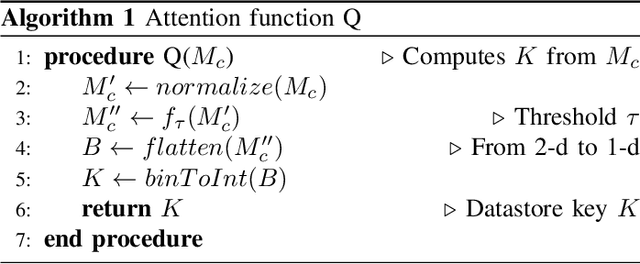
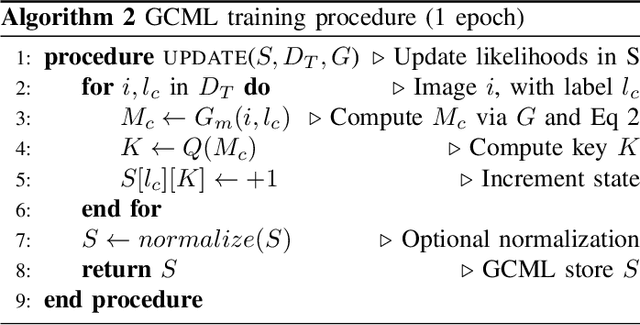

Abstract:Convolutional neural networks (CNN) are now being widely used for classifying and detecting pulmonary abnormalities in chest radiographs. Two complementary generalization properties of CNNs, translation invariance and equivariance, are particularly useful in detecting manifested abnormalities associated with pulmonary disease, regardless of their spatial locations within the image. However, these properties also come with the loss of exact spatial information and global relative positions of abnormalities detected in local regions. Global relative positions of such abnormalities may help distinguish similar conditions, such as COVID-19 and viral pneumonia. In such instances, a global attention mechanism is needed, which CNNs do not support in their traditional architectures that aim for generalization afforded by translation invariance and equivariance. Vision Transformers provide a global attention mechanism, but lack translation invariance and equivariance, requiring significantly more training data samples to match generalization of CNNs. To address the loss of spatial information and global relations between features, while preserving the inductive biases of CNNs, we present a novel technique that serves as an auxiliary attention mechanism to existing CNN architectures, in order to extract global correlations between salient features.
DANTE: A framework for mining and monitoring darknet traffic
Mar 05, 2020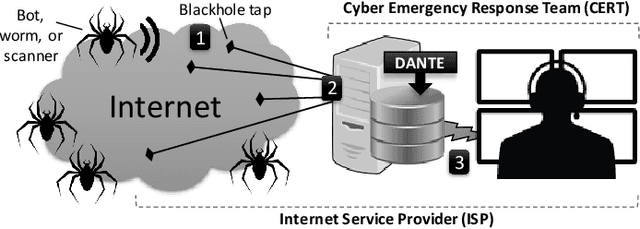
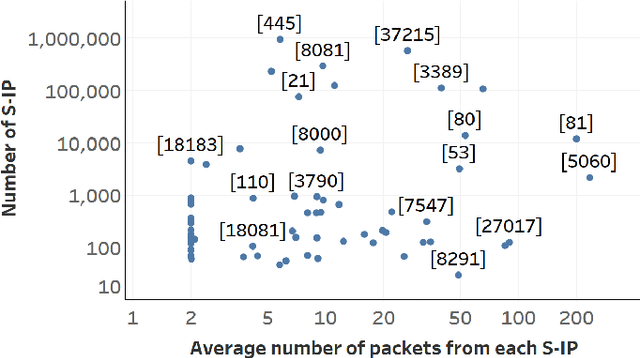
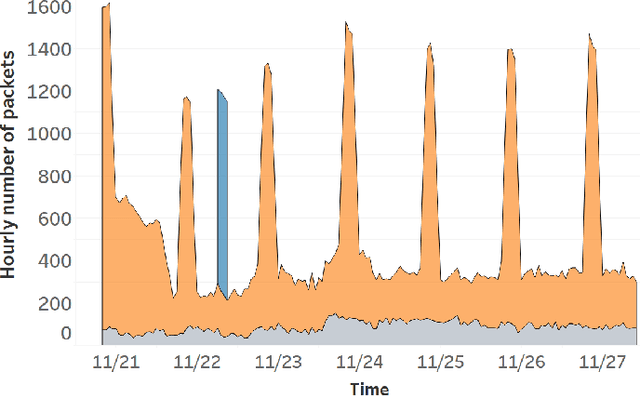
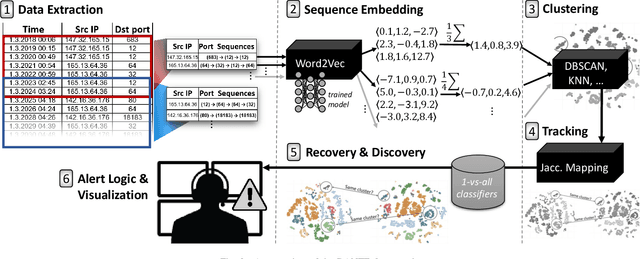
Abstract:Trillions of network packets are sent over the Internet to destinations which do not exist. This 'darknet' traffic captures the activity of botnets and other malicious campaigns aiming to discover and compromise devices around the world. In order to mine threat intelligence from this data, one must be able to handle large streams of logs and represent the traffic patterns in a meaningful way. However, by observing how network ports (services) are used, it is possible to capture the intent of each transmission. In this paper, we present DANTE: a framework and algorithm for mining darknet traffic. DANTE learns the meaning of targeted network ports by applying Word2Vec to observed port sequences. Then, when a host sends a new sequence, DANTE represents the transmission as the average embedding of the ports found that sequence. Finally, DANTE uses a novel and incremental time-series cluster tracking algorithm on observed sequences to detect recurring behaviors and new emerging threats. To evaluate the system, we ran DANTE on a full year of darknet traffic (over three Tera-Bytes) collected by the largest telecommunications provider in Europe, Deutsche Telekom and analyzed the results. DANTE discovered 1,177 new emerging threats and was able to track malicious campaigns over time. We also compared DANTE to the current best approach and found DANTE to be more practical and effective at detecting darknet traffic patterns.
 Add to Chrome
Add to Chrome Add to Firefox
Add to Firefox Add to Edge
Add to Edge